Related Research Articles

The Order of Preachers, also known as the Dominican Order, is a Roman Catholic mendicant order of pontifical right that was founded in France by a Castilian priest named Dominic de Guzmán. It was approved by Pope Honorius III via the papal bull Religiosam vitam on 22 December 1216. Members of the order, who are referred to as Dominicans, generally display the letters OP after their names, standing for Ordinis Praedicatorum, meaning 'of the Order of Preachers'. Membership in the order includes friars, nuns, active sisters, and lay or secular Dominicans. More recently, there has been a growing number of associates of the religious sisters who are unrelated to the tertiaries.
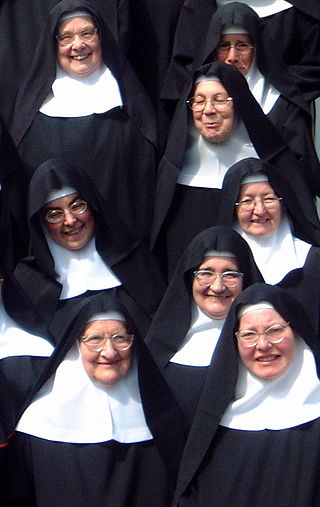
A nun is a woman who vows to dedicate her life to religious service and contemplation, typically living under vows of poverty, chastity, and obedience in the enclosure of a monastery or convent. The term is often used interchangeably with religious sisters who do take simple vows but live an active vocation of prayer and charitable work.

The Old Catholic Mariavite Church refers to one of two independent Christian churches, both of which can be dated from 1906 but which became distinct post 1935 as a result of doctrinal differences, and are collectively known as Mariavites. Mariavitism first emerged from the religious inspiration of Polish noblewoman and nun Feliksa Kozłowska (1862-1921) living in the Russian Partition of Poland in the late 19th-century. A young Catholic priest from a modest background, Jan Maria Michał Kowalski (1871-1942), became convinced by Kozłowska's revelations and adopted her vision as his own project by her side.

The Catholic Mariavite Church is an independent Old Catholic denomination in Poland resulting from a schism in 1935 within the Old Catholic Mariavite Church.

Feliksa Magdalena Kozłowska, known by the religious name Maria Franciszka and the epithet "Mateczka", was a Polish religious sister, Christian mystic and visionary who founded a movement of renewal in the Roman Catholic church in the Russian Partition of Poland. It was to follow the simplicity of the life of Mary, mother of Jesus. Early in the 20th century, she and this movement were excommunicated and became an autonomous church in fellowship with the Old Catholic Church of the Netherlands. In 1935 it split in two and became the Old Catholic Mariavite Church and the Catholic Mariavite Church. Both denominations were part of a single schism from the Catholic Church which declared it as heretical in 1906.
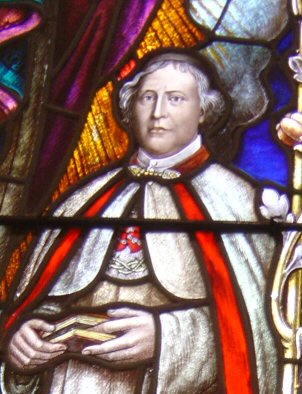
Pierre Coudrin, SS.CC was a French Catholic priest who founded the Picpus Fathers, a religious institute of the Catholic Church known for its missionary work in Hawaii, Africa, Europe, Central America and the Pacific Islands.
Christine Mayr-Lumetzberger is a teacher and former Benedictine nun who was excommunicated from the Roman Catholic Church when she and six others were ordained as priests by an Independent Catholic bishop in 2002. She was ordained a bishop in 2003 along with Gisela Forster; reportedly, the ordination was performed by Roman Catholic bishops whose identity remains a secret.
Women as theological figures have played a significant role in the development of various religions and religious hierarchies.

Jan Kowalski, later known as Maria Michał Kowalski, was a Polish Roman Catholic diocesan priest who became a schismatic religious leader and controversial innovator. Following excommunication from his church, he was consecrated as a bishop in the Old Catholic Archdiocese of Utrecht, established the Old Catholic Church of the Mariavites in Poland, rose to be its archbishop and died a martyr. He is venerated as a saint in the Catholic Mariavite Church.
Sister Anne Carr was a Catholic nun, a Sister of Charity of the Blessed Virgin Mary, an activist, and feminist theologian at the University of Chicago Divinity School, where she was the first female permanent member of the faculty. She was well known for her beliefs regarding feminism and seen as an advocate for women's rights. Carr specialized in feminism theology regarding Catholic thought and during her lifetime she wrote ground breaking books which examined feminism and Christianity.
Virgil Horace Barber was an American Jesuit.
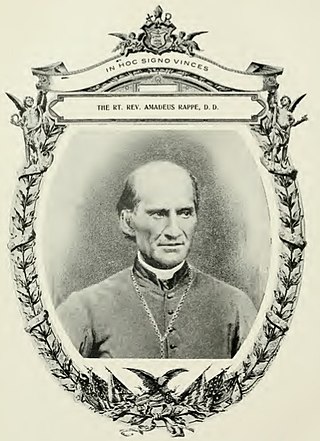
Louis Amadeus Rappe was a French-born prelate of the Roman Catholic Church. He served as the first bishop of the new Diocese of Cleveland in Ohio from 1847 to 1870.

Women in Church history have played a variety of roles in the life of Christianity—notably as contemplatives, health care givers, educationalists and missionaries. Until recent times, women were generally excluded from episcopal and clerical positions within the certain Christian churches; however, great numbers of women have been influential in the life of the church, from contemporaries of Jesus to subsequent saints, theologians, doctors of the church, missionaries, abbesses, nuns, mystics, founders of religious institutes, military leaders, monarchs and martyrs.
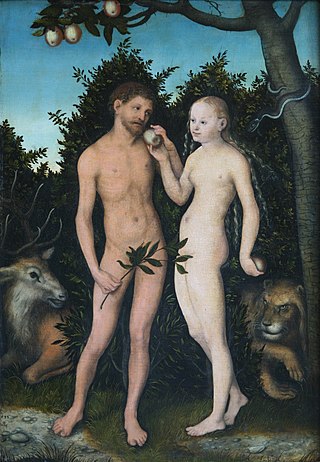
Women play significant roles in the life of the Catholic Church, although excluded from the Catholic hierarchy of bishops, priests, and deacons. In the history of the Catholic Church, the church often influenced social attitudes toward women. Influential Catholic women have included theologians, abbesses, monarchs, missionaries, mystics, martyrs, scientists, nurses, hospital administrators, educationalists, religious sisters, Doctors of the Church, and canonised saints. Women constitute the majority of members of consecrated life in the Catholic Church: in 2010, there were around 721,935 professed women religious. Motherhood and family are given an exalted status in Catholicism, with The Blessed Virgin Mary holding a special place of veneration.

"A Catholic Statement on Pluralism and Abortion", alternatively referred to by its pull quote "A Diversity of Opinions Regarding Abortion Exists Among Committed Catholics" or simply "The New York Times ad", was a full-page advertisement placed on October 7, 1984, in The New York Times by Catholics for a Free Choice (CFFC). Its publication brought to a head the conflict between the Vatican and those American Catholics who were pro-choice. The publicity and controversy which followed its publication helped to make the CFFC an important element of the pro-choice movement.
Catholic sisters and nuns in the United States have played a major role in American religion, education, nursing and social work since the early 19th century. In Catholic Europe, convents were heavily endowed over the centuries, and were sponsored by the aristocracy. Religious orders were founded by entrepreneurial women who saw a need and an opportunity, and were staffed by devout women from poor families. The number of Catholic nuns grew exponentially from about 900 in the year 1840, to a maximum of nearly 200,000 in 1965, falling to 56,000 in 2010. According to an article posted on CatholicPhilly.com, the website of the Archdiocese of Philadelphia, Pennsylvania, in October 2018, National Religious Retirement Office statistics showed that number as 47,160 in 2016, adding that “about 77 percent of women religious are older than 70.” In March 2022, the NRRO was reporting statistics from 2018, citing the number of professed sisters as 45,100. The network of Catholic institutions provided high status lifetime careers as nuns in parochial schools, hospitals, and orphanages. They were part of an international Catholic network, with considerable movement back and forth from Britain, France, Germany and Canada.
Jacqueline Grennan Wexler, commonly known as Sister J, was an American Catholic religious sister who rose to prominence when she, as President of Webster College, strove to convince the Holy See allow the transferral of the college's ownership to a lay board of trustees. Webster College became the first Catholic university to legally split from the Catholic Church. She later left her religious order, the Sisters of Loretto, and was President of Hunter College in New York City from 1970 to 1980. She went on to serve as President of the National Conference of Christians and Jews from 1982 to 1990.
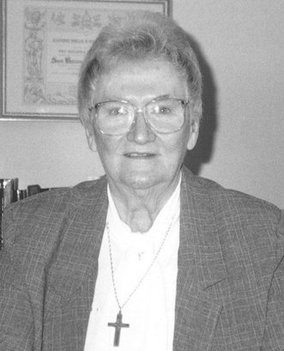
Helen Margaret Feeney (1919–2004) was an American ecclesiastical administrator and member of the Sisters of St. Joseph who served as the first woman chancellor of the Roman Catholic Archdiocese of Hartford (1986–1994). She was only the fifth woman to serve as chancellor of a US archdiocese. Feeney was named to the Connecticut Women's Hall of Fame in 1995.
References
- ↑ Cunneen, Chris. "Abbott, Gertrude (1846–1934)". Australian Dictionary of Biography. National Centre of Biography, Australian National University. Retrieved 31 December 2012.